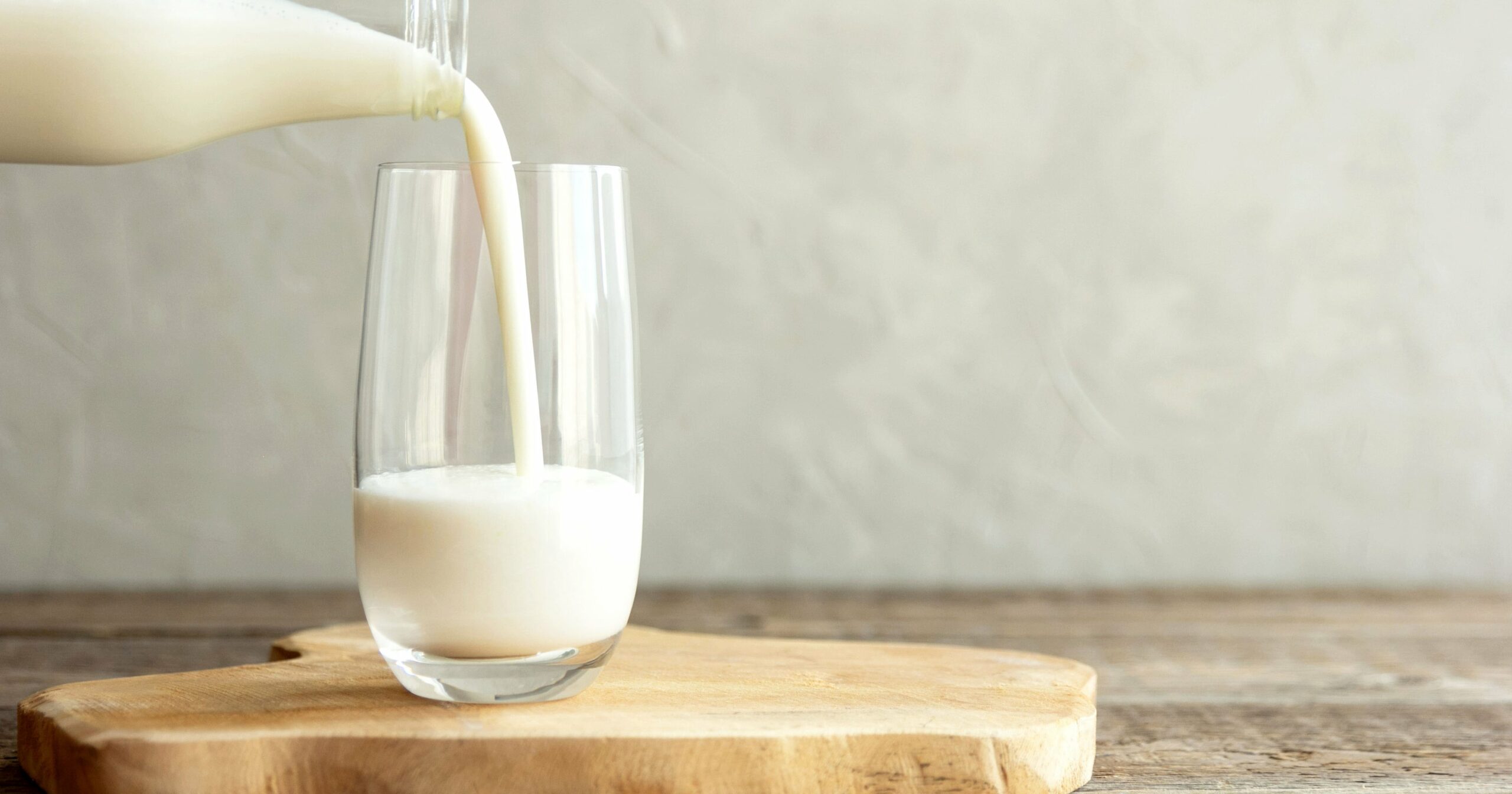Fermented foods have been staples in the human diet since the dawn of time, but lately, it seems that they’re having a moment, with new products popping up on shelves every week. From kimchi to sauerkraut to kombucha, fermentation is no longer just a means of preserving food. Fermented foods have numerous health benefits, including gut health, immune support, and even skin health, thanks largely to their probiotic content. They also add unique flavors and textures to meals, making them a fun addition to any kitchen.
Among the variety of fermented offerings, kefir stands out as a particularly trendy choice. But what is kefir, and is kefir good for you? Read on to find out everything you need to know about this fermented drink, from what kefir is, to what makes it different from yogurt, to its nutritional benefits. Plus, learn how to make your own kefir at home – it’s easier than you might think!
What Is Kefir?
Kefir (pronounced “kuh-feer”) is a fermented milk beverage produced by mixing milk with kefir grains. Kefir grains are a complex structure of proteins, fats, and sugars that contain live bacteria and yeasts that ferment the milk into a sour, fizzy drink with a consistency like thin yogurt.
Kefir originated in the Balkans, Eastern Europe, and the Caucasus region, but its consumption has expanded globally over time. Nowadays, you can find a variety of different kefir products in the dairy section of the grocery store, from fruity, flavored versions to plain, unsweetened options.
What is kefir good for? You can drink it straight from a glass or add it to smoothies, dressings (be sure to pick an unsweetened option), or baked goods. Just keep in mind that if you add it to baked goods, you won’t reap the benefits of its probiotics since they’ll be killed during baking. That said, it can add a nice moistness and tang to your baked recipes.
Kefir vs. Yogurt
If you’re wondering, “Is kefir dairy?” you’d be correct in assuming it is. Typically made from cow or goat milk, kefir is a dairy product similar to yogurt (just, again, thinner in texture). But there are a few key differences to be aware of.
The biggest difference between kefir and yogurt is how they’re produced. While yogurt uses specific bacterial cultures, kefir is made using kefir grains, which contain a combination of bacteria and yeasts. Kefir is also quicker to produce and ferments at room temperature, while yogurt typically ferments at warmer temperatures.
Another key difference is their flavor and consistency. While yogurt is generally “spoonable,” with a milder, creamy taste, kefir is drinkable and has a tangier, slightly effervescent taste due to the presence of yeast. Kefir also contains a wider variety of probiotics than most yogurt.
Kefir Benefits and Nutrition
Is kefir good for you? The answer is a resounding “yes.” Kefir is renowned for its numerous health benefits, thanks to its probiotic and postbiotic (byproducts of yeast and bacteria metabolism). The pros of kefir include relieving chronic constipation, improving quality of life for people with inflammatory bowel disease, reducing cavity risk, and improving blood sugar management in people with type 2 diabetes.
Kefir also boasts an impressive array of nutrients. It’s rich in protein, calcium, phosphorus, and vitamin D, making it the perfect bone health beverage. It also contains B vitamins, magnesium, and potassium to round out its nutritional profile
As for potential dangers of kefir, the food is generally considered safe. That said, if you’re not used to probiotics, you may get a bit of gas and bloating when you first add kefir to your diet.
If you’re interested in making kefir at home, you should also be aware that if homemade kefir isn’t prepared properly, there’s a risk of contamination with harmful bacteria, so good hygiene is essential when making your own kefir.
Finally, if you have a weakened immune system, it’s best to check with your doctor before drinking (homemade or store-bought) kefir, as some studies show that probiotics (such as those found in kefir) may increase infection risk for people with weakened immune systems.
How To Make Kefir
If you’re wondering how to make kefir, you’re in luck. To get started, you’ll need just two ingredients and some basic equipment.
Ingredients:
- Milk.
- Kefir grains.
Equipment:
- Large, clean glass jar.
- Plastic or wooden spoon (metal can react with the kefir grains).
- Breathable cover (a coffee filter or paper towel works well).
- Plastic strainer.
Directions:
- Place 2 tablespoons of kefir grains into the glass jar.
- Pour 2 cups of milk into the jar.
- Cover the jar with a breathable cover. This allows the kefir to breathe while keeping out dust and bugs.
- Let the mixture ferment at room temperature for about 24 hours. Swirl the jar occasionally to mix the kefir grains with the milk.
- Once it has thickened to the consistency of very thin yogurt, use a plastic strainer to strain the mixture into another large, clean jar. It can be stored in the fridge for up to one week.
If you want to reap the health benefits of fermented foods, kefir is one of your best options. Its rich probiotic content and variety of vitamins and minerals make this trendy drink a boon for those looking to improve their health. Whether enjoyed alone or in smoothies and dressings, kefir offers a versatile way to boost your probiotic intake.
Sarah Glinski is a registered dietitian and health and nutrition writer with over six years of experience in the health and wellness industry. Her specialties include diabetes, kidney disease, cancer, gut health, and intuitive eating. She believes food is more than just nutrients and acknowledges the power food can have to heal and build community. As a nutrition professional who writes health content, Sarah uses the latest scientific research to guide her writing and recommendations. Her goal as a writer is to ensure that complex health information is made easy to understand and actionable so that more people can benefit from it.



